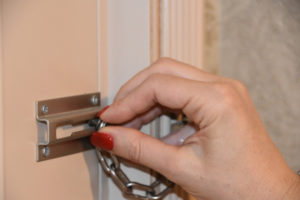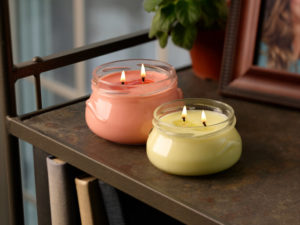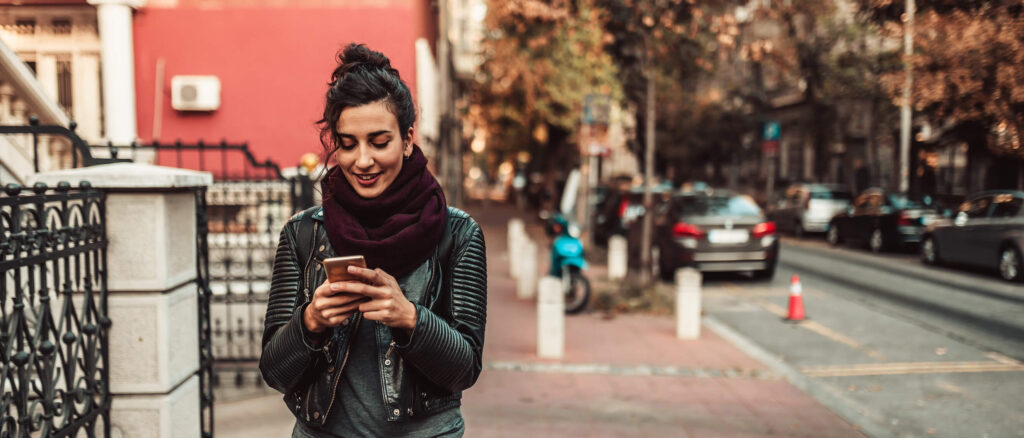While there are some things you can't control, this guide talks about what you can do to keep yourself and your family safe
100 Ways to Make Your Home Safer
In general, your home is a safe place. However, there are always risks.
Check out the following US stats:
- Thousands of people die yearly from accidental home injuries.¹
- One home is burglarized about every 23 seconds.²
- From 2013 to 2017, about 2,600 civilians died annually in home fires.³
Other preventable home deaths include falls, accidental poisoning, and indoor pollution.
The good news is that by incorporating just a few tips, your home can be even safer than it is now. By combining several different products and approaches, you can begin to create a home security plan.
Here are 100 tips to make your home a safer place.
Home security tips
1. Get an alarm system
It’s hard to determine exactly how many potential intruders are put off by home alarm systems. You’ll see conflicting answers as you peruse the web. Some burglars won’t mess with security systems. Some are comfortable disabling certain brands.
But regardless of how they feel about alarm systems, most would-be burglars don’t want to be caught. So get a security system, preferably one that still alerts even when disabled. Chances are a burglar will skip over your place to go for an easier target.
2. Permit/license your alarm
Own an alarm? Check if your city requires a permit or license.
Licensing your alarm makes it easier for the police department to respond to you. It also helps you avoid potential fines should they respond to your unregistered alarm. In some cities, operating an alarm system without a valid permit is a misdemeanor. That means you could face a hefty fine and even potential time in the county jail.
3. Add window sensors
Window sensors are also known as open/closed or entry sensors. When added to a window or a door, they’ll let you know if it opens or shuts. Protecting potential entrances is a great step toward securing your home.
Sensors can be part of both a home security system and a home automation system. You can create cause and effect actions that span both. For example, you could set the sensor to turn on your bedroom light if your door opens after midnight. Or you can have it send you a text if the door opens while you’re away.
4. Add glass break sensors
A glass break sensor listens for the sound of glass breaking. These little beauties are especially handy in a room with more than one window. Most door/window sensors sell for around $40 each, and you have to get one for each window you want monitored. In contrast, a single glass break sensor can monitor an entire roomful of windows for $80ish.
5. Add a security sign
If you aren’t in the market for a full-blown security system, a security sign is the next best thing. Burglars look for easy targets, and the threat of a security system may be enough to deter them. Be sure to use a legitimate sign; professionals won’t be fooled by a phony.
Using fake security signs can be effective, but there’s no guarantee that they’ll stop a burglar in their tracks. Don’t say we didn’t warn ya.
6. Add security stickers
A surprising number of burglars enter through a door, but a window’s also a possible entry point.⁴ Add security alarm stickers to all first-floor windows as a warning.
Like security signs, stickers can put off thieves, but there are no guarantees—especially if you don’t really have a security system
7. Add a security camera
Security cameras work both with a home security system and on their own. A camera’s presence may deter burglars, and if that doesn’t work, it’ll help catch them. Cameras are especially effective in catching porch pirates in the act.
8. Turn old cell phones into security cameras
There are lots of free apps that can turn your old phones and tablets into security cameras. We recommend Camio for this.
Most phones and tablets aren’t waterproof, so you can’t use your new cameras outdoors. But you can put them around the house. (These are especially effective if you live with someone you don’t trust, like an adult child who might be stealing from you. Most people won’t think twice about an outdated phone sitting on a bookshelf.)
9. Create a burglar decoy
No, not a decoy of a burglar, a decoy for a burglar. Some burglars “smash and grab,” especially if an alarm goes off. Fill a box with some cash, costume jewelry, and a few papers to shove in your sock drawer. A harried burglar will check the sock drawer in the master bedroom, grab the box, and go.
10. Answer the door the right way
Tell your kids not to answer the door without your express permission. Even someone they know can pose a danger to them. And when you see an unexpected stranger at your door, don’t let them inside. It’s better to be safe than polite.
11. Add a door brace
Bolt a door brace behind your entryway door. When in the locked position, the bolt helps a door sustain several hundred pounds of blunt force. If someone thinks they’ll kick down your braced door, they’ve got another think coming.
12. Lock your doors and windows
Entering a home can be super easy for an intruder. Way too many people leave the door unlocked! So even if you live in a small, sleepy neighborhood . . . just lock your doors and windows. It’s better to play it safe.
13. Don’t put a picture of your key on Facebook
In the glorious days of 2020, you can copy a house key with only a photo.⁵ It’s super convenient if you want to make a copy without surrendering the original, but it’s also potentially dangerous. Don’t share photos of your keys with anyone who isn’t welcome to enter your home at all hours.
If you’re thinking, “Why would I ever share a photo of my keys with someone?” just think of people doing it for the ‘gram. An influencer might snap a shot of a complimentary keychain (keys included) from their new sponsorship partner and post it on every social media channel they’ve got. They may never realize that showing their house key poses a danger to them and their belongings.
14. Secure sliding doors
Sliding glass doors are, well, made of glass, so a lock might not cut it. Secure a sliding glass door from sliding open with a metal or wood rod to reinforce the door.
Pro tip: add a jimmy plate (latch guard). The plate will prevent a burglar from lifting the door off its tracks.
15. Reinforce door jambs
Non-glass doors can be weak too. In general, the weakest points on a door are the lock, jamb, and the hinges. We suggest reinforcing all three points on all external entryways. You can get the supplies from Amazon and do the job yourself—no carpentry skills necessary.
16. Add a peephole
A door peephole’s a $25 piece of home security gold. It’ll provide a wide-angle view of your visitors so that you can decide to let them in . . . or not.

17. Don’t rely on chain locks
Please don’t rely on chain locks for security. With enough force, intruders can break them relatively easily.
We’re not saying that you can’t have a chain lock at all, but if you do, you should have a peephole, a deadbolt, or a door brace to go with it.
18. Install a deadbolt
A single-cylinder deadbolt lock with a 1-inch throw never hurts. But word on the street is that a deadbolt can be a fire hazard, so we suggest locking it only when you’re asleep or need extra protection. For example, if you have a known stalker, it’s better to keep the deadbolt on.
19. Install a safety door
Screen doors, like glass doors, are what they sound like. They can be cut or punctured for easy entry. Every screen door needs a safety door to go with it. That puts an extra layer between an intruder and the screen.
20. Use window film
Front doors with side pane glass look nice but add a home security complication: privacy.
At night, you can see right through these windows into your yard. While it’s good that you can see other people, it’s bad that they can see you. For just a few dollars, add decorative window film to solve the problem.
Because windows can be a point of entry into your home, it's also a good idea to keep an eye on them with additional security. Just about any security camera can be used as a window camera if it is positioned correctly.
21. Shut your blinds at night
Lights on, dark outside? Keep your blinds shut. You’d be surprised by how many burglars (and, let’s face it, creeps) take advantage of that time of night when they can see straight into your home.
22. Make porch lights automatic
A peephole isn’t very helpful in the dark. We suggest adding automated porch lights. That could cover everything from motion-based lights to a setup that allows you to turn your lights on at sunset and off at sunrise.
23. Light up the dark
Porch lights are just the beginning. Lighting up your backyard with motion lights makes it harder for intruders to sneak around. Especially ensure that all potential entrance areas into your home are well lit.
24. Trick intruders with light automation
Light automation is a great way to make your home look lived in. Companies like BeON base their entire home security model around light automation that mimics your at-home behavior. Other home automation companies allow you to create custom schedules or even actions like “turn on lights if motion is detected” or “turn off lights when I’m not at home.”
25. Trick intruders with noise
Burglars generally look for empty houses. If a burglar hears a sound in your home, there’s a good chance they’ll hightail it. There are inexpensive products on Amazon that mimic the lights of a television. You could even play clips of people talking with a smart speaker like Sonos or Echo.
26. Invest in a smart doorbell
Smart doorbells act as your eyes and ears. When someone rings your doorbell, you can use the equipment to visually confirm who’s at the door. Some products also feature two-way communication, which is especially handy when you’re not at home but want to appear that you are.
27. Shut the garage door
A garage door is also a common point of entry for a burglar. To improve your home’s security, keep the door shut while mowing the lawn, playing outside, or even running in to grab a forgotten item. An open door is an open invitation. If you don’t want to extend it, keep the door closed.
28. Lock the linking door
If you have an attached garage, lock the door between your house and the garage. So many people leave this door unlocked even though it’s an entry to the home like any other.
It may sound tedious, but it doesn’t take that much time to lock and unlock the door. You could even add an automated lock that will open as you approach.
29. Don’t leave garage door openers in the car
Don’t leave your car in the driveway with the garage door opener inside. Cars are easy to break into. You put your home security at risk by leaving a key to your home in the vehicle.
30. Change your locks
Any time you move into a new place, it’s never a bad idea to change the locks. This applies to renters, who should demand a new lock from their landlord, but also to homeowners.
A keyless lock is another option. Smart locks are extremely useful for giving out temporary keys to workers and keeping track of who comes and who goes.
31. Double-check when workers leave
If you let a cleaning or construction crew into your home, check all doors and windows to make sure they’re locked after they leave. Many previous burglars first visited a home as a guest. It’s easy enough for a worker to leave a door or window unlocked for easy entry into your house later on.
Personal safety and preparedness
32. Learn CPR
CPR saves lives. Without CPR, it takes three to four minutes for a person to become brain-dead due to a lack of oxygen. Please, please learn how to perform CPR (and the Heimlich, for good measure).
33. Make a free panic button
IFTTT is a free app that connects different web services. It gives users the ability to make a “DO button,” which makes a great panic button. You can set up the DO button to call for help, post to social media, or whatever it takes to keep you safe.
34. Don’t shoot your eye out
BB guns and pellet guns aren’t toys. Treat them with the respect of a weapon. Keep them in a secure storage, and supervise use to reduce the risk of injury.
35. Get a weapon
You’ll probably never need to use a weapon, but during a home invasion, it could be your best bet. A weapon doesn’t have to be a gun if you’re not comfortable with using one. You can also get a stun gun or pepper spray.
The most important part of owning a weapon is keeping it in a secure place away from children. The second most important part is learning how to use it by practicing every few months.
36. Prepare for tornadoes
Preparing for disasters may seem a little paranoid, but it’s smart. Disasters can strike in an instant. Start by creating a tornado-safe room. This room should be windowless and stocked with emergency supplies like food, water, medication, and a radio.
37. Add bike helmets to your storm room
If you live in a tornado-prone area, keep bike helmets in your safe place to protect those craniums.
38. Set up free weather alerts
Many companies offer free severe weather alerts that can be sent straight to your phone. Also, many local cities and counties have emergency services that will text you if local emergencies occur. Sign up for both to stay ahead of the game.
39. Join your neighborhood watch
Join the neighborhood watch. If there isn’t one, start one. You can also create a Facebook page to voice safety concerns or suspicious activity.
40. Automate your neighborhood watch
Through IFTTT, you can automate your home to alert your neighbors when something goes wrong. Calling the police is great, but neighbors are closer.
How would you alert your neighbors? Let’s say that you use SmartThings door and window sensors and you’re leaving for a vacation. You can set up an IF recipe that says, “If the front door opens, post to Facebook.” Ta-da!
41. Check with your local PD
Find out if your local police department offers free home security checks. If it does, take advantage of the service. Many police departments will even provide a survey or an assessment with suggestions for security improvements.
Similarly, some PDs offer free vacation checks in which they will stop by to check on your home while you’re on vacation. Take advantage of these free services for a safer home.
42. Use medical safety devices
If you live with or help care for an older loved one or a person with a disability, limited mobility, or another medical concern, invest in a medical safety device.
Medical safety devices/medical alert devices are different from home security systems, and the two technologies are not interchangeable. Medical safety systems often include wearable panic buttons that are with the person 24/7. If a fall or emergency occurs, that person can use the wearable to call for help. Some brands even have automatic alerts so if the wearer gets knocked out, the device still calls an ambulance.
43. Keep an emergency supply of water
Water’s one of the first things to run out during an emergency. Keep an emergency supply by storing at least three gallons of water per person in your residence.⁶
44. Keep an emergency supply of food
You should also keep a three-day supply of food handy. Your food can be anything that gives you plenty of energy and lasts a long time without refrigeration. That includes jerky, dried fruit and nuts, Cliff Bars, Spam, and bean soups (keep a can opener around). If you have a baby, you should also have prepared baby food on hand.
We recommend checking the expiration dates on stored food at least once a year.
45. Keep an emergency radio handy
Radios may be obsolete technology, but they’re an excellent backup when the Wi-Fi’s down and your phone’s dead. Invest in a battery-operated or hand-cranked AM/FM radio. Also, consider investing in a NOAA radio.
46. Have aspirin for heart attacks
Aspirin might not be your first choice of painkillers, but you should still keep it around in case of a heart attack. If someone has a heart attack, they should immediately have aspirin and water. (Chewed aspirin works faster than a swallowed pill.)
Before or while the heart attack victim takes the aspirin, you or someone else should call 911.
47. Keep a first aid kit handy
This is pretty straightforward. Just know that some items in a first aid kit do expire. You should update yours periodically.
Also, if your first aid kit doesn’t have everything you think you’ll need, you can supplement it. You can even keep multiple first aid kits around. There’s nothing wrong with being overprepared.
48. Put up your numbers
Make sure your street address number is visible from the street during the day and at night. If you need help, you don’t want emergency services struggling to find you. The faster they locate your house, the faster you get help, and in an emergency, every second counts.
49. Sign up for Smart911
Smart911 is a free service used by select 911 agencies. With it, you can set up a family profile with pictures of each family member, their allergies, and their medical information. You can even add pet info. In an emergency, the data is shared with EMTs or other responders.
50. Set up Family Watchdog
Family Watchdog is another free online service. This website is geared more toward tracking sex offenders. You can use the service to sign up for free alerts when sex offenders move into or out of your area.
51. Use discretion on social media
Social media is great for sharing important things, but broadcasting every little thing you do can be dangerous. Don’t let the social media world know that you’re on vacation for two weeks while your house sits vacant.
Indoor safety
52. Use GFCI outlets
Ground Fault Circuit Interrupters prevent electric shocks, and they’re required by code in certain rooms. If you own a newer home, you’ve probably noticed them in your kitchen and bathroom. You’ll also find them in areas that are prone to moisture, like a crawl space.
If you have an older home, you can add a GFCI receptacle for about one buck. A worthy investment.
53. Invest in safety gloves
If you like to slice and dice, you should invest in no-cut safety gloves, which are on Amazon. You’ll never have to worry about losing a finger again!
54. Perform a radon gas test
Radon gas is the second-leading cause of lung cancer.⁷ According to Verywell Health, “Radon gas results from the natural decay of uranium beneath our homes.” It could be in your home without you even knowing. The only way to know for sure is to test your home. To perform the test, buy a radon gas test from Amazon.
The EPA and the Surgeon General both recommend testing for all homes and also first- or second-floor apartments.
55. Lock the unusual
Locking the front door seems pretty standard, but most people don’t think to secure things like gates, sheds, and garages. These easily accessible structures are perfect targets for a quick grab-and-run. We suggest investing in a good lock for all three items or even adding an outdoor video camera to keep an eye on things.
56. Lock up any drugs or weapons
If you take medication or own weapons, keep them locked up. It’s especially important to get a secure gun safe.

57. Look out for poison that looks like food
Keep household cleaners and medications out of the kitchen and away from food. Cough drops look like candy. Pills look like candy. Shaving cream looks like whip cream! Kids don’t always know the difference, so it’s best to keep poisonous products out of reach.
58. Add sensors to monitor locked-up things
Use an open/close sensor to monitor things that should be locked up. The sensor can send an alert if someone sneaks into the liquor cabinet or the gun safe. You can even set up alerts on your phone without paying a monthly fee.
59. Add flood or freeze sensors
Broken or frozen pipes can do significant damage. You can detect these risks through home automation. Freeze sensors and flood sensors can monitor temperature and water. If the sensors detect an issue, you’ll be notified so that you can address it before things get out of hand.
60. Stay safe in the tub
Kids can’t supervise themselves. Don’t leave them alone in the tub. Instead, gather anything you might need to use during bath time beforehand and bring it with you. If you do use your phone or read a book while you’re in there, look up frequently to make sure everyone’s okay.
61. Add slip-resistant mats to the bath
Slip-resistant mats might seem like an old person thing, but they guard against accidental slips in the tub or shower. Hey, they happen to everyone.
62. Install bathroom grab bars
This is a step up from the slip-resistant mat. You might feel too young for grab bars, but let’s face it: you’re going to need them eventually. Why not be extra safe by installing them now?
63. Check the water temperature
You can adjust your water through the heater, not just through the faucet. Set the water heater thermostat to a temperature below 120°F to reduce the risk of burns and scalding.
64. Keep cords away from children
Cords are dangerous for little ones. Not just window blind cords; laptop and charger cords can be risky, too. Keep them out of reach and off the ground. (They’re also a tripping hazard.)
65. Consider a voice assistant
“Alexa, call 911.” How simple is that? If you keep smart speakers with voice assistants around the home, you can call emergency services quickly from any room.
Or, if you have a landline, just keep receivers at hand.
66. Cover those outlets
We know old-school outlet covers are hard to use and a potential choking hazard, but you need to cover your outlets. Try a sliding cover as a handy alternative. Sliding covers stay connected to the outlet all the time, so you won’t leave them lying around while you’re vacuuming.
67. Watch out for the stairs
Stairs can be dangerous. Keep your stairways well lit, and if you don’t have a stable railing, add one. If there’s carpet on your stairs, it needs to be tight with no protruding nails or tripping hazards. And, if you’ve got little ones, put a gate at the top of the stairs.
68. Secure your TV
Wall-mounted TVs look good, and they’re safer than setting a TV on a stand. Securing your television to the wall makes it less likely to fall on something or someone.
69. Take home maintenance seriously
Don’t let the projects pile up. Some home maintenance issues can be safety issues. Think carpet that no longer lies flat (tripping hazard), smoke alarms with old batteries (fire hazard), burnt-out lightbulbs (safety issue), or mold (health issue). A home in tip-top shape is a safe home.
70. Add a safe
Valuables like birth certificates and passports should be kept in a fireproof safe that’s bolted to the floor. If it’s not bolted down, it could be stolen in a home burglary.
71. Create a home inventory
Make a home inventory, just in case the contents of your home ever need to be replaced by your insurance company. You can keep the finished list in your fireproof safe. It’s smart to also put a digital copy in the cloud, just in case.
Your home inventory doesn’t have to be a written list. If it’s easier, you can video your assets while walking around the house. But make sure you have a physical copy of the footage, not just a digital one.
72. Invest in an etching pen
You can use an etching pen to mark or engrave a unique identifier onto your portable property. That way, if someone steals your stuff, you have proof that it’s yours.
73. Teach internet safety
The internet’s terrific, but it can also be a humongous gap in your home’s protection. Teach your kids basic internet safety to keep them from inviting internet strangers to your home or giving out sensitive information, like the passcode to your alarm.
74. Secure your wireless network
You wouldn’t leave your door open, so don’t leave your Wi-Fi network vulnerable, either. Hackers can breach home defenses through unsecured wireless networks. They can then steal or destroy sensitive information and important files.
75. Use smart passwords for your smart home
Just because you can plug and play doesn’t mean you should. Choose challenging passwords for your smart home devices, then rotate them. Using both a secure wireless network and password-protected devices minimizes your risk of a hacked home.
76. Use a password vault
You’ve got one password for email. One for Amazon. One apiece for your bank, your mortgage, your kid’s lunch account, your blog, and your favorite restaurant loyalty app. Guess what? To be truly safe, you need a unique password for every. Single. One.
Let’s say that you used to play Neopets. You used your email address to register, and you repurposed a password from another account. Neopets hackers now have your email-password combo. You can bet your bottom dollar that those baddies are trying this login info on a bunch of other websites. (Or they’ve sold it for a mint to someone else, who’s doing the same thing.) Having a unique password for every account makes this a non-issue.
Instead of trying to create and keep track of dozens of unique passwords, use an online password vault like LastPass or KeePass. These tools help you both generate strong and unique passwords and store them in a master vault.
77. Invest in surge protectors
Surge protectors protect your electronic devices from surges of electricity like those caused by lightning strikes. Such surges can fry your electronics, causing thousands of dollars’ worth of damage.
Fire safety
78. Check with the local fire department
Local fire departments often provide free services to homeowners, including fire safety checks and even free smoke alarm programs.
79. Don’t hotbox the house
If you’re going to smoke, smoke outside! Smoking indoors is both a health and safety hazard. The National Fire Protection Association (NFPA) says that smoking is the leading cause of home fire deaths.⁸

80. Blow out the candle
Candles smell nice and create a romantic ambiance, but don’t leave them burning unattended. If you can’t stand to sit still long enough to babysit a candle, diffuse oils or use dimmable lights instead.
81. Close the door against fire
If you’re caught in a house fire, asphyxiation could kill you even if you escape the flames.⁹ Use a piece of cloth over your mouth as a filter and stay low to the ground. And when you find a flame-free room, close the door.
82. Create a home evacuation plan
How do you get out when there’s a fire? Create a home evacuation plan and practice it quarterly with your family. Make sure your kids know how to unlock their bedroom windows and push out the screens if needed (but maybe also get security cameras so they can’t use that technique to sneak out).
83. Buy a fire ladder
If you own a two-story home, invest in a fire ladder (available on Amazon). Today’s homes have beautiful, open-air floor plans. They look fantastic, but without barriers between rooms, they burn faster. When a fire occurs, you don’t have much time to escape. A fire ladder could literally be a lifesaver.
84. Install a sprinkler system
The NFPA finds that sprinklers activate in 94% of fires in homes with an indoor sprinkler system. Once activated, the sprinklers had a 96% success rate in controlling the fire.¹⁰ That means that a sprinkler is effective against nine out of ten home fires.
80% of the time when the sprinklers didn’t turn on, it was because the homeowner had turned them off.¹¹ So if you own a sprinkler system, keep it turned on, even during the winter. The risk of frozen pipes is small when weighed against your life.
85. Install a smoke detector
Adding a smoke detector to each floor of your home and in every bedroom is an easy way to keep your family safe.
86. Install a CO detector
Some smoke detectors are smoke/CO combos, but if your smoke alarm can’t detect carbon monoxide (CO), you should add a separate detector. Also, be alert to the signs of CO. You can’t smell it, but it can make you feel woozy and forgetful.
87. Install a heat sensor or a connected smoke alarm
If you want to take things to another level, add a connected smoke alarm or a heat sensor to your home. Heat sensors detect rapid increases in heat. And when they’re connected, you can set up mobile or email alerts.
88. Invest in a fire extinguisher
Fire extinguishers are best for small kitchen fires. Buy one, then learn to use it.
If the fire’s rapidly spreading, get out, don’t try to put it out. But you can still grab the extinguisher if it’s nearby; you might be able to use it to create a quick path through the flames.
89. Use space heaters safely
Space heaters are a must-have in frigid apartments and chilly basements, but you have to be careful. Never leave your heater unattended, and keep debris and flammable objects at a safe distance. It’s also a good idea to dust out the inside of space heater on a regular basis (but not when it’s running).
90. Don’t multitask while cooking
You have fried chicken on the stove, laundry in the dryer, kids who need homework help, and urgent texts from your boss. This is a recipe for a fire-related disaster.
Don’t leave food on the stovetop unattended. If you have to answer a text or sift through the mail, stay nearby. Keep pot and pan handles turned so kids can’t reach them, or—better yet—keep the kids out of the kitchen.
91. Use a fireplace screen
If you’ve got a wood-burning fireplace, invest in a fireplace screen. It’ll prevent sparks from getting on the floor (potential fire hazard) and also keep curious little hands away from the fire (burning hazard).
Outdoor safety
92. Add mulch to your swing set
If you own a swing set or other outdoor play equipment, consider adding a foot of wood chips or mulch. The chips create a soft layer to lessen the blow of falls.
93. Grill safely
The best spot to use a grill is on a concrete patio-type surface that’s at least 10 feet away from flammable things like landscaping . . . and your house.
Grills should never be used in apartment buildings or on balconies. Some parks have free grills, so if you want to host a barbeque night, that’s a possible alternative.
94. Be cautious with lawnmowers
Don’t mow the lawn with kiddos (or anyone else) around. The lawnmower can throw rocks and sticks.
Also, if you’re having an older child or young teenager mow the lawn, we suggest staying out there with them.
95. Play it safe in the pool
Drowning’s a leading cause of death for young people.¹² If you have a home pool, put a fence around it. Installing a four-sided fence reduces a child’s risk of drowning by 83%.¹³
96. Fence in your yard
In fact, go ahead and fence in the whole yard. A solid fence with a sturdy side-yard gate can help keep out unwanted intruders. Of course—make sure that it locks, and keep it locked.
97. Clean up your landscaping
Don’t give a burglar a place to hide. Tidy overgrown landscaping. Keep bushes trim, and pick up your walkways while you’re at it. You don’t want to create a tripping hazard for yourself by cluttering up sidewalks. (Unless you think the best way to deter burglars is through Home Alone-style booby-trapping.)
98. Plant landscaping with safety in mind
Plant thorny plants near windows. No one will be able to get in or even peer in without being scratched.
99. Don’t supply burglars with tools
Keep things like ladders and tools picked up and put away. You don’t want to provide burglars with the tools they need to break into your home.
100. Use the best defense
The best defense is never to step foot in a home again. JK. The best defense is to use common sense inside your home (and, frankly, outside of it). You can’t accidentally start an indoor cigarette fire if you aren’t smoking indoors. A burglar won’t stroll casually into your home if you keep doors locked, and you’re more likely to escape a house fire if you run periodic drills.
Along those same lines, teach your kids to be smart about what they do. And don’t let anyone into your home if they don’t respect your rules.
Sources:
- Statista, “Rate of Unintentional-Injury-Related Deaths at Home in the US 1930 to 2019.” Accessed November 1, 2021.
- FBI, “2017 Crime in the United States.” Accessed November 1, 2021.
- Marty Ahrens and Radhika Maheshwari, National Fire Protection Association, “Home Structure Fires.” October 2021. Accessed November 1, 2021.
- Meghan Jones, Reader’s Digest, “7 Sneaky Ways Burglars Can Break Into Your House.” June 18, 2021. Accessed November 1, 2021.
- Filip Truță, Hot for Security, “Key-cloning App Lets You (or a Stranger) Copy Your Key With a Photo.” July 7, 2017. Accessed November 1, 2021.
- Ready.gov, “Build a Kit.” Accessed November 1, 2021.
- Lynne Eldridge, MD, Verywell Health, “The Leading Causes of Lung Cancer.” September 2, 2021. Accessed November 1, 2021.
- Marty Ahrens, National Fire Protection Association, “Home Fires Started By Smoking.” January 2019. Accessed November 1, 2021.
- Ready.gov, “Home Fires.” Accessed November 1, 2021.
- National Fire Protection Association, “Myths vs Facts About Home Fire Sprinklers.” Accessed November 1, 2021.
- Injury Facts, “Death by Demographics.” Accessed November 1, 2021.
- American Red Cross, “Home Pool & Hot Tub Safety.” Accessed November 1, 2021.
Related Articles



